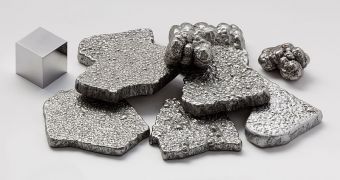Scientists with the NASA Astrobiology Institute (NAI) and the Georgia Institute of Technology (Georgia Tech) say that iron did the job of magnesium some three million years ago, when it helped ribonucleic acid (RNA) take on the molecular shapes that ultimately enabled it to support complex biology.
It could be argued that this is what made life possible here on Earth. The connection surprised scientists, primarily because iron and magnesium are located relatively far apart from each other on the Periodic Table.
According to past studies, RNA was once the most important molecule in the world, much more so than the then-non-existent proteins and deoxyribonucleic acid (DNA). A shift in these roles occurred once the latter evolved sufficiently to underlie the emergence of more complex lifeforms.
Details of the new investigation were published in the May 31 online issue of the esteemed, peer-reviewed journal PLoS ONE, which is edited by the Public Library of Science. The paper shows that RNA-based lifeforms represented an intermediary step to more complex organisms.
Investigations of the origins of life have demonstrated that Earth had very small amounts of oxygen available for chemical reactions more than three billion years ago. At the same time, there was a lot of iron available.
“One of the greatest challenges in astrobiology is understanding how life began on Earth billions of years ago when the environment was very different than it is today. This study shows us how conditions on early Earth may have been conducive to the development of life,” says Carl Pilcher.
The official holds an appointment as the director of the Astrobiology Institute, at the NASA Ames Research Center (ARC), Moffett Field, California. He says that, in the absence of oxygen, iron can take the place of magnesium inside RNA molecules.
This substitution enabled RNA to take on multiple forms, which meant that it could begin to catalyze the tremendously complex chemical reactions that led to the emergence of complex lifeforms.
“The primary motivation of this work was to understand RNA under plausible early Earth conditions. Our hypothesis is that RNA evolved in the presence of iron and is optimized to work with iron,” adds Georgia Tech School of Chemistry and Biochemistry professor, Loren Williams.
The expert, who is also the leader of the NAI team, says that most of the iron on the planet turned into rust once photosynthesis produced sufficient oxygen for this reaction to become widespread.

 14 DAY TRIAL //
14 DAY TRIAL //